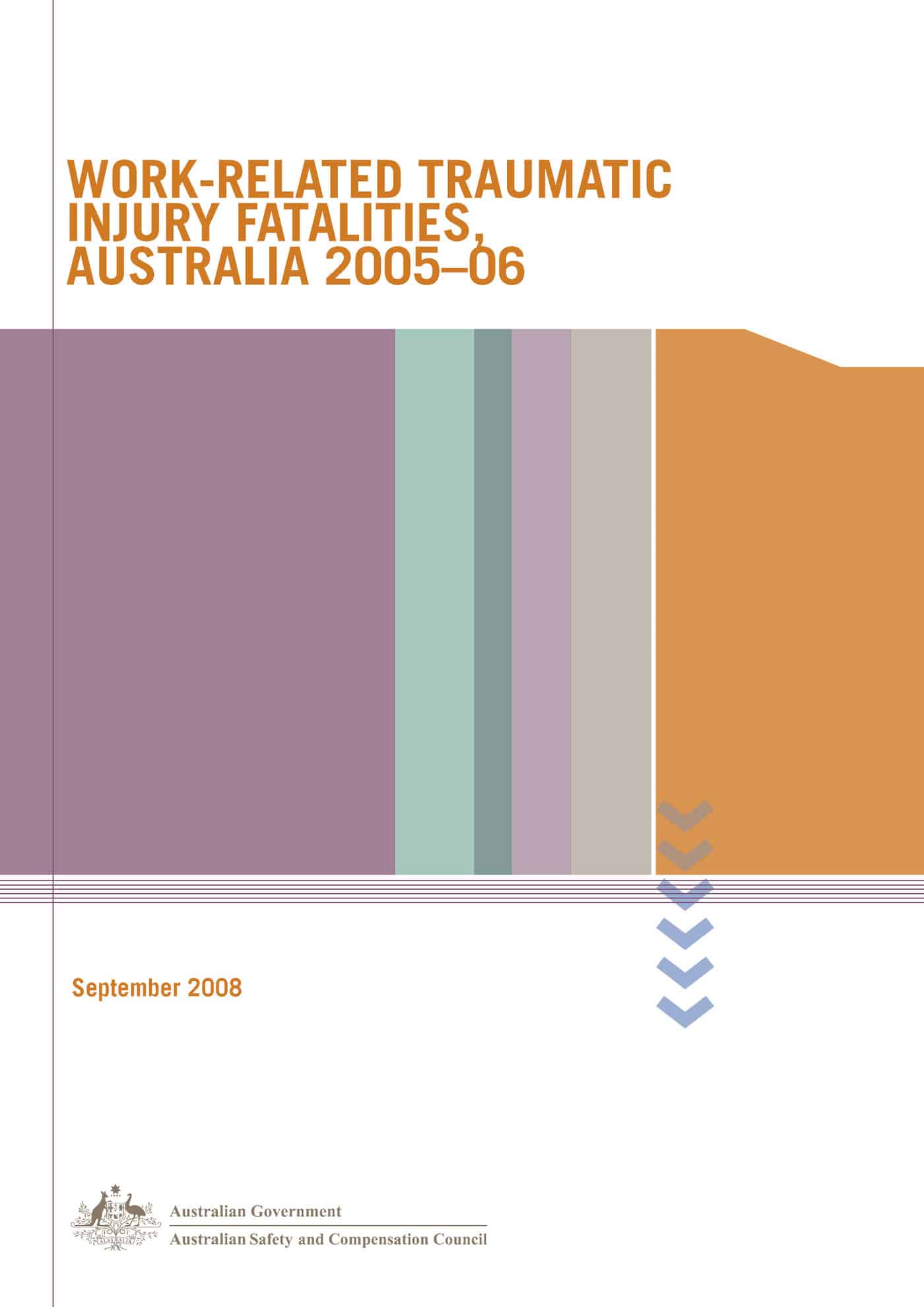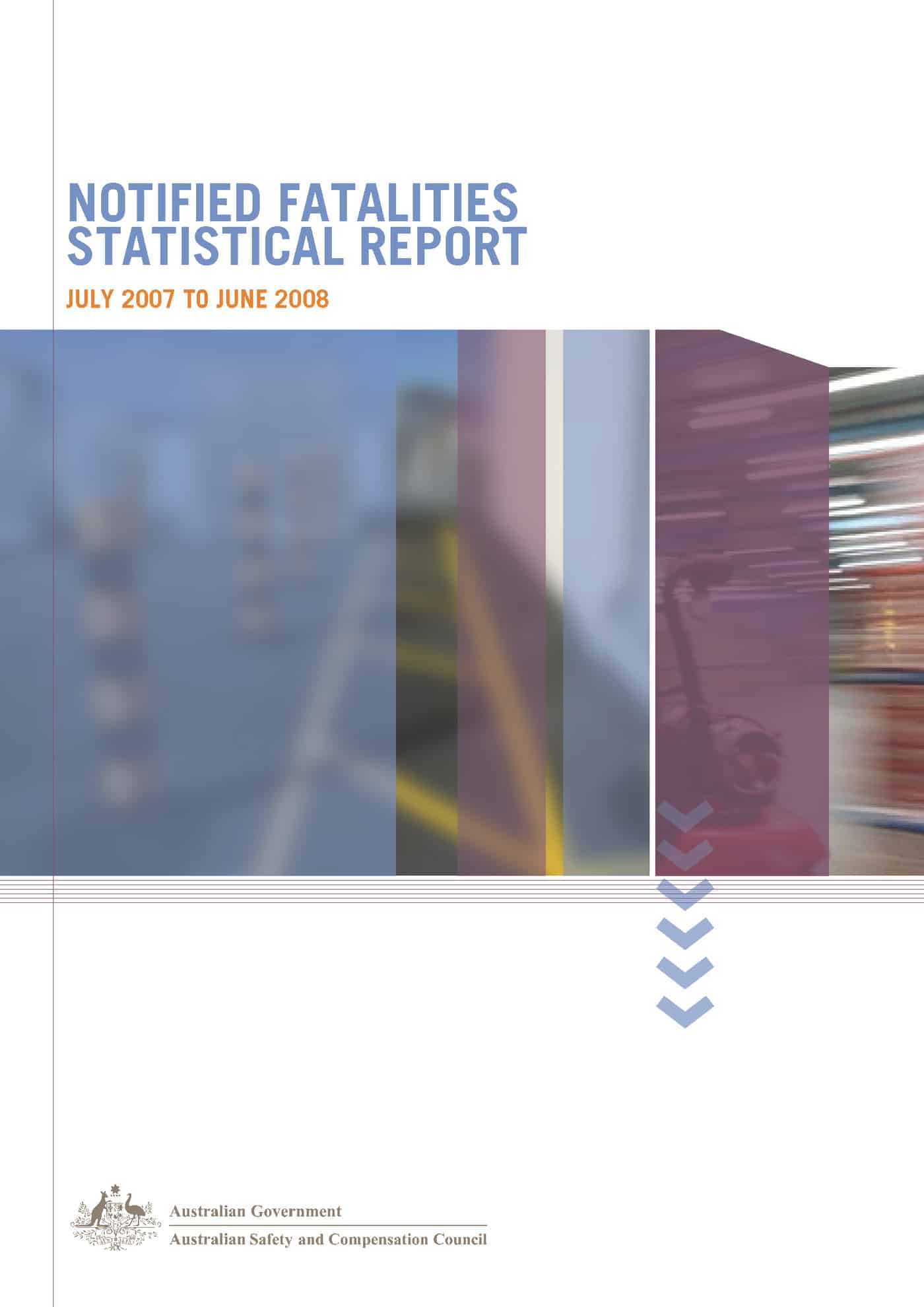The latest official, but not comprehensive, data for Australian workplace fatalities has been released. The Australian Safety & Competition Council has published the Notified Fatalities Statistical Report July 2007 to June 2008.
Chairman Bill Scales AO said that this report provides analysis of notified fatalities across Australia for the full financial year. “There were 16 fewer notified worker fatalities in 2007-08 (131 worker fatalities) than in 2006-07 (147 worker fatalities), a decrease of 11 per cent. While this suggests that we are taking steps in the right direction to reduce work-related fatalities, every death in the workplace is still one death too many.”
Some other key findings of the report include:
- In 2007-08 there were 150 notified work-related fatalities (131 worker notified fatalities and 19 bystander notified fatalities). 137 of these fatalities were of males.
- Four industries accounted for eight out of every ten notified work-related fatalities: construction (24 per cent), transport and storage (23 per cent), agriculture, forestry and fishing (18 per cent) and manufacturing (13 per cent).
- The most common causes of fatalities were vehicle accidents (44 fatalities), being hit by falling objects (23 fatalities), being hit by moving objects (21 fatalities), falls from a height (16 fatalities) and being trapped by moving machinery (12 fatalities).
- Construction workplaces recorded a consistently high number of notified worker fatalities over the period 2003-04 to 2006-07 (ranging from 18 in 2004-05 to 36 in 2007-08).
- There was a notable decrease in the number of notified worker fatalities in agriculture, forestry and fishery workplaces (42 fatalities in 2003-04 to 25 in 2007-08).
- There was a notable decrease in the number of notified worker fatalities in mining workplaces (4 fatalities in 2007-08 compared with 13 fatalities in 2006-07).
The ASCC has also released the Work-Related Traumatic Injury Fatalities, Australia, 2005-06 report. Some key findings of this report for 2005-06 include:
- 270 people died from injuries sustained while working for income.
- 123 persons died from injuries incurred while travelling to or from work.
- 41 persons were killed as a bystander to work activity.
- The agriculture, forestry and fishing industry and transport and storage industry recorded the highest number of deaths while working for income (55 deaths each) followed by the construction industry (43 deaths).
- Vehicle accident was the cause of 40 per cent of the working for income deaths. The next most common cause was being hit by moving objects (14 per cent) followed by falls from a height (13 per cent).
- Vehicle accidents accounted for 18 bystander deaths, of those, 13 involved trucks, semi trailers or lorries.
Other statistical reports are available at SafetyAtWorkBlog by entering the search term “statistics” in the search box below or by clicking HERE and HERE



